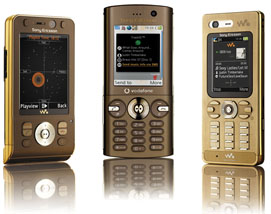Almost lost in the hubbub over the latest iPhone firmware update and whether it would "brick" unlocked phones was the fact that Apple patched 10 vulnerabilities.
Almost lost in the hubbub over Thursday's iPhone firmware update and whether it would "brick" unlocked phones was the fact that Apple Inc. patched 10 vulnerabilities -- twice the number of fixes issued since the phone's June debut.
The iPhone 1.1.1 update, which like previous upgrades is delivered through Apple's iTunes software, fixes seven flaws in the built-in Safari browser, two in the smart phone's Mail application and one in its use of Bluetooth, the short-range wireless technology.
The seven Safari vulnerabilities include several cross-site scripting (XSS) flaws, one that can disclose the URL of other viewed pages -- an online banking site, say -- and another that lets attackers execute malicious JavaScript in pages delivered by the SSL-encrypted HTTPS protocol. One of the Safari flaws, and an associated vulnerability in Mail, involve "tel:" links, which can be exploited by hackers to dial a number without the user confirming the call.
But it was the Bluetooth bug that got the attention of security researchers. Symantec's DeepSight threat network team pointed out the vulnerability in an advisory to customers Friday. "Reportedly, the Bluetooth flaw occurs when malicious Service Discovery Protocol (SDP) packets are handled; any attacker that is within Bluetooth range can exploit it remotely," wrote DeepSight analyst Anthony Roe in the alert. "Successful exploits are reported to allow the attacker to execute arbitrary code."
According to Apple's security advisory, the Bluetooth bug was discovered and reported by Kevin Mahaffey and John Hering of Flexillis Inc., a Los Angeles-based company that specializes in mobile security development and consulting. Flexillis may be best known for its reverse engineering of the exploit used to hack into several celebrities' T-Mobile cell phone accounts in 2005, include Paris Hilton and Vin Diesel.
The Bluetooth bug may prove to be dangerous to iPhones, Roe speculated, since the potential range of the technology is much greater than most people think. While Bluetooth's potential range -- and thus the maximum distance between attacker and victim -- is about 400 feet, "Several proof-of-concept Bluetooth antennas have intercepted Bluetooth signals at almost a mile," he said.
Roe also pointed out that HD Moore, the driving force behind the Metasploit penetration framework, had recently demonstrated that shellcode could be run on an iPhone. Moore, said Roe, proved that "exploiting security vulnerabilities affecting the iPhone is by no means out of reach."
In a post to his blog -- and to the Metasploit site -- on Wednesday, Moore said that because every process on the iPhone runs as root, and so has full privileges to the operating system, any exploit of an iPhone application vulnerability, such as Safari or Mail or Bluetooth, would result in a complete hijack of the device. Moore also announced that he would add iPhone support to Metasploit, which would make it much easier for hackers to access a vulnerable phone.
Moore acknowledged that he's looking at the Bluetooth vulnerability. "The Bluetooth SDP vulnerability is the only issue I am focusing on," he said in an e-mail Friday.
He also hinted that locating vulnerable iPhones wouldn't be a problem. "The Bluetooth MAC [media address control] address is always one less than the Wi-Fi interface's MAC address," he said. "Since the iPhone is always probing for or connected to its list of known access points, the presence of the iPhone and its Bluetooth MAC address can be determining by using a standard Wi-Fi sniffer.
"Once the Bluetooth MAC address is obtained, the SDP issue can be exploited by anyone within range of the Bluetooth chip, or within range of the attacker's antenna, which can be up to a mile away in some cases," he said.
If Moore manages to craft an exploit and add it to Metasploit, it's probable that criminal hackers will quickly follow. "Once we see something in Metasploit, we know it's likely we'll see it used in attacks," Alfred Huger, vice president of engineering with Symantec's security response group, said in a July interview.
Jarno Neimela, a senior researcher with F-Secure Corp., a Helsinki-based security vendor, also hit the alarm button, but for a different reason. In a posting to his company's blog Friday, Neimela pointed out that there's no security software available for the iPhone, thanks to Apple's decision to keep the device's inner workings a secret.
"The amount of technical information [available about the iPhone] makes it likely that sooner or later someone will create a worm or some other malware," Neimela said. "This will create an interesting problem for the security field as the iPhone is currently a closed system and it's not feasible to provide anti-virus or other third-party security solutions for it.
"So if someone were able to create a rapidly spreading worm on the iPhone, protecting users against it would be problematic."
Although iPhone owners will be automatically notified in the next week that the new patches are ready to download and install, a large number of those who have modified or unlocked their phones will probably forgo the fixes, since the 1.1.1 update apparently also disables unlocked phones and wipes unauthorized third-party applications that have been added with various hacks.
soource
PCWorld
 It's amazing what some decent marketing can do. These phones were presented to me as 'the Havana collection' and I immediately fell in love with them. A more objective person might liken the colour pallet to something else altogether, which would have a decidedly less exotic connotations.
It's amazing what some decent marketing can do. These phones were presented to me as 'the Havana collection' and I immediately fell in love with them. A more objective person might liken the colour pallet to something else altogether, which would have a decidedly less exotic connotations.












